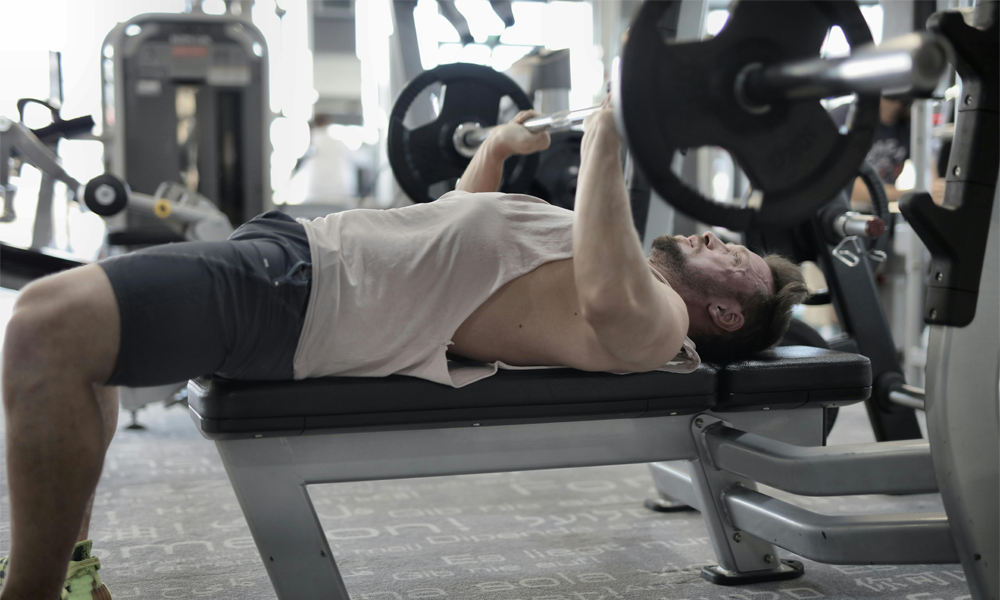Lower Chest Development Exercises for Mass and Definition

Developing a strong, well-defined chest is a top priority for many fitness enthusiasts, and the lower chest is often the most neglected part. While most people focus on the upper or middle chest, targeting the lower pectorals is crucial for achieving full, rounded, and aesthetically pleasing pecs.
In this article, we’ll break down the most effective lower chest development exercises, explain their form, benefits, and how to incorporate them into your training routine. Whether you’re a beginner or an advanced lifter, mastering lower chest training will take your physique to the next level.
Why Target the Lower Chest?
The chest muscles are made up of the pectoralis major and pectoralis minor, with the major divided into upper (clavicular), middle (sternal), and lower (abdominal) fibers. Standard flat bench presses and push-ups often stimulate the upper and mid-chest, but the lower chest requires a specific angle and motion to fully engage.
Benefits of Lower Chest Training:
Improved overall chest shape and symmetry
Stronger pushing power (great for sports and functional strength)
Better posture and upper body balance
Enhanced aesthetics (especially for those aiming for a sculpted look)
Click the link to know detail about How Much Is Anytime Fitness Membership? Full Cost Guide
Key Principles for Lower Chest Development
Before diving into the exercises, it’s essential to understand a few principles that enhance muscle development:
1. Angle Matters
Targeting the lower chest typically requires decline movements, where your torso is angled downward. This shifts emphasis from the upper to the lower pectorals.
2. Mind-Muscle Connection
Focus on contracting the lower chest at the top of each movement and controlling the negative (eccentric) portion to stimulate deeper fibers.
3. Progressive Overload
Increase weight, reps, or sets gradually over time to continue challenging the muscle and promote growth.
Top Lower Chest Development Exercises
Let’s explore the most effective exercises you can include in your chest routine.
1. Decline Barbell Bench Press
Primary Focus: Lower pectoral muscles
Equipment: Decline bench, barbell
How to Perform:
Lie flat on a decline bench and grip the bar slightly wider than shoulder-width.
Lower the bar slowly to your lower chest.
Press it upward while squeezing your chest.
Pro Tips:
Keep your elbows at about a 45-degree angle.
Avoid bouncing the bar off your chest.
2. Decline Dumbbell Press
Primary Focus: Lower chest isolation
Equipment: Decline bench, dumbbells
How to Perform:
Lie on a decline bench with a dumbbell in each hand.
Lower both dumbbells in a controlled motion to your sides.
Press them back up, keeping palms facing forward.
Why It Works:
It allows a greater range of motion than the barbell version and helps correct muscular imbalances between the sides of your chest.
3. Chest Dips (With Forward Lean)
Primary Focus: Lower chest and triceps
Equipment: Dip bars or parallel bars
How to Perform:
Grab the bars and lift your body.
Lean forward slightly (about 30 degrees) to activate the lower chest.
Lower your body until your elbows are at 90 degrees, then push back up.
Important Tip:
Leaning forward is critical — staying upright targets more of the triceps.
4. Cable Crossover (Low to High)
Primary Focus: Lower to mid chest
Equipment: Cable machine
How to Perform:
Set pulleys to the lowest setting.
Grab handles and step forward, leaning slightly.
Bring your hands up and together at chest height in an arc motion.
Form Cue:
Maintain a slight bend in the elbows and focus on squeezing the chest at the top.
5. Decline Push-Ups
Primary Focus: Bodyweight lower chest activation
Equipment: Bench or elevated surface
How to Perform:
Place your feet on a bench and your hands on the floor, shoulder-width apart.
Lower your body toward the ground and push back up.
Progression Tip:
Add a weighted vest or resistance band as you get stronger.
6. Seated Chest Press (Decline Angle)
Primary Focus: Lower and mid chest
Equipment: Machine (with adjustable angle or decline setting)
Why It Works:
Machines offer controlled resistance, making them great for hypertrophy and beginners learning the mind-muscle connection.
7. Incline Cable Fly (Facing Down)
Primary Focus: Reverse angle fly for lower pec stretch
Equipment: Incline bench + cables
How to Perform:
Set an incline bench facing the cable machine.
Position cables slightly above shoulder level.
Fly arms downward across the chest in a hugging motion.
This variation stretches the lower chest and engages stabilizing muscles.
Sample Lower Chest Workout Routine
Here’s a sample lower chest-focused routine to add to your weekly training:
Warm-Up (5–10 min):
Arm circles
Light push-ups
Shoulder rotations
Workout:
Decline Barbell Bench Press – 4 sets × 8–10 reps
Chest Dips (Forward Lean) – 3 sets × 10–12 reps
Cable Crossover (Low to High) – 4 sets × 12–15 reps
Decline Dumbbell Press – 3 sets × 8–10 reps
Decline Push-Ups – 2 sets to failure
Cooldown:
Stretch your chest and shoulders to prevent tightness.
Training Tips for Best Results
Train Chest Twice a Week: Split between upper/mid and lower focus.
Rest Between Sets: 60–90 seconds for hypertrophy; 2–3 minutes for strength.
Proper Nutrition: Protein-rich diets fuel muscle growth.
Stay Consistent: Results take time — stay dedicated and track your progress.
Common Mistakes to Avoid
Neglecting Form: Lower chest exercises require strict form to avoid injury.
Overtraining: Hitting the chest too often can lead to fatigue and a plateau.
Ignoring Mind-Muscle Connection: Rushing through reps without engaging the muscle is ineffective.
No Variation: Change exercises every 4–6 weeks to prevent adaptation.
Conclusion
The lower chest is essential for complete chest development, symmetry, and aesthetics. By incorporating the right decline presses, dips, and fly variations, you can effectively target and grow your lower pecs. Whether you’re training for appearance, strength, or performance, these exercises will help unlock your chest’s full potential.
Remember, great results come from consistent training, smart technique, and recovery. Focus on form, track your progress, and stay committed to your goals.
Frequently Asked Questions (FAQs)
1. How often should I train my lower chest?
Ideally, 1–2 times per week, depending on your split. Ensure at least 48 hours of recovery between sessions.
2. Can I build my lower chest without a decline bench?
Yes. Exercises like chest dips, decline push-ups, and low-to-high cable flyes are effective alternatives.
3. What causes an underdeveloped lower chest?
Over-reliance on flat or incline bench presses and neglecting decline or targeted lower chest movements.
4. Are chest dips better than decline presses?
They’re both excellent. Dips offer bodyweight resistance and improve mobility, while decline presses allow progressive overload.
5. Can beginners train the lower chest effectively?
Absolutely. Start with bodyweight movements like push-ups and dips, then gradually introduce weights and machines.



